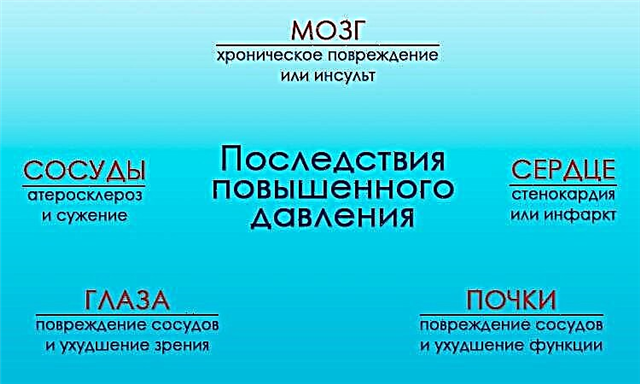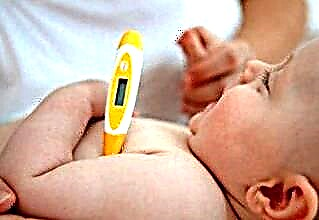Basic information
The disease is characterized by the appearance of caseous-purulent discharge, purulent points, films or liquid pus in the lacunae of the tonsils. An independent diagnosis does not exist - this is the conventionally called those forms of tonsillitis, in which purulent discharge is found during pharyngoscopy.

It can be both acute and chronic. Moreover, not every sore throat is purulent. For example, catarrhal tonsillitis is often found, in which there are no films against the background of hyperemic tonsils, and in general it proceeds more easily, with a low temperature.
Acute purulent inflammation requires mandatory treatment until the last films disappear... This is a very important clarification. Often, patients like to stop treatment ahead of time: when they see the first improvements, they stop taking a full course of antibiotics, which ultimately prolongs the duration of the disease, because the condition soon worsens again.
Untreated sore throats and neglect of full-fledged antibiotic therapy partly lead to chronic tonsillitis, which cannot be completely cured without radical intervention - you can only periodically sanitize the tonsils.
Causes of the disease
Tonsillitis is called acute or chronic infectious and allergic diseases associated with inflammation of the components of the lymphadenoid pharyngeal ring (palatine tonsils, as a rule). Purulent tonsillitis combines various clinical forms of both acute and chronic tonsillitis, characterized by the presence of purulent discharge on the tonsils.
The reason for the development of most primary tonsillitis in adults is group A beta-hemolytic streptococcus, and in young children, adenoviruses are more common. It is transmitted by airborne droplets, but in some cases endogenous infection occurs.
Although pathogens penetrate the upper respiratory tract and there is always a threat, not every time a person gets sick. Pathogenic microorganisms are activated precisely with a decrease in immune defense, which contributes to the development of a pathological process in the lymphoid tissues of the pharyngeal ring, in this case in the tonsils.
Typical symptoms
For different types of tonsillitis with purulent discharge, different clinical manifestations are characteristic. In this case, purulent tonsillitis without fever can also be. In an acute process, the following symptoms are disturbing:
- sore throat;
- rapidly growing weakness;
- headache;
- lack of appetite;
- increased body temperature - subfebrile or febrile;
- chills.
It is customary to distinguish 3 forms of acute tonsillitis - catarrhal, follicular and lacunar. In this case, purulent discharge occurs only with follicular and catarrhal. The last two are characterized by the following manifestations:
- severe sore throat radiating to the ear;
- difficulty swallowing;
- febrile body temperature (38-40 ° C);
- manifestations of severe intoxication: severe weakness, headache and joint pain.
Although the symptoms are similar, the lacunar course is usually much more severe.
In chronic tonsillitis, characterized by the presence of caseous-purulent plugs, the symptoms are more blurred: a foreign body sensation in the throat, periodically low-grade fever or general malaise and weakness without fever, muscle and joint pain. Sore throat rarely occurs.
Diagnostics
During the reception, the specialist takes note of the complaints, collects anamnesis, assesses the objective status, etc. The diagnostic algorithm is as follows.
| Complaints | In acute tonsillitis: severe sore throat, not only when swallowing, headache, body temperature up to 40 ° C, poorly confused (with follicular and lacunar) or subfebrile (with catarrhal). Lack of appetite. The deterioration of the condition develops rapidly, there is a strong weakness, chills. In chronic tonsillitis: sore throats, low-grade fever, poor sleep, a broken state during the day, pain in muscles and joints often recur. |
| Medical history | In acute tonsillitis: contact with patients with angina. In chronic tonsillitis: complaints of recurrent tonsillitis. |
| Anamnesis of life | Information about the transferred tonsillitis, possible metatonsillar complications. |
| Objective status | A condition of moderate severity due to pain in acute tonsillitis. |
| Local status | Pharyngoscopy in acute tonsillitis - the palatine tonsils are swollen and hyperemic; purulent films are found on the surface of the tonsils. On palpation, the regional lymph nodes are enlarged, painful. Pharyngoscopy in chronic tonsillitis - liquid pus, and more often - caseous-purulent plugs in the lacunae, as well as signs of Giza, Zak, Preobrazhensky, adhesions of the tonsils with arches, loose tonsils, lymphadenitis. |
This is how the diagnosis is made.
Laboratory research:
- general blood analysis;
- general urine analysis;
- throat swab BL.
 Instrumental research:
Instrumental research:
- pharyngoscopy;
- electrocardiography.
According to the indications, other laboratory and instrumental studies may be prescribed.
In addition, purulent tonsillitis requires differential diagnosis. The disease is differentiated from pharyngeal diphtheria, agranulocytosis, measles, leukemia, scarlet fever, infectious mononucleosis. All these pathologies have a similar clinical picture - severe sore throat, the presence of films on the tonsils, manifestations of intoxication.
Chronic tonsillitis should be differentiated from pharyngomycosis, in which films also appear on the tonsils. Pharyngoscopy is required. According to indications - consultations of other narrow-profile specialists.
Thus, the diagnosis is established on the basis of clinical manifestations, data of pharyngoscopy, and purulent points on the tonsils are not always evidence of a "simple" sore throat.
Treatment methods
The form of the disease determines the tactics of treating purulent tonsillitis. Bed rest, plentiful warm drinks (fruit drinks, mineral water) are recommended. Before treating, you must still seek advice.
In acute tonsillitis, in addition to antibacterial drugs, non-steroidal anti-inflammatory drugs are used, as well as antiseptics and disinfectants.
Also additionally can be assigned:
- laser therapy;
- wave therapy;
- ultra-high-frequency inductothermy;
- washing the tonsils, etc.
According to the indications, a referral can be issued for a consultation with an infectious disease specialist, hematologist, neuropathologist, cardiologist, rheumatologist, nephrologist.
Conservative therapy
How to treat? Conservative therapy involves systemic antibiotic therapy, the use of local rinses, antiseptics, and antipyretic drugs in the acute process. In chronic cases, washing the lacunae with antiseptics, treating the tonsils with various drugs, and correcting immunity is indicated. Each point of treatment should be discussed in more detail.
Antibiotics
Systemic antibiotic therapy, that is, taking antibiotics by mouth, is the basis for the treatment of acute purulent sore throat, which cannot be dispensed with:
- Benzylpenicillin;
- Cefuroxime;
- Azithromycin;
- Ampicillin;
- Cefazolin;
- Josamycin;
- Amoxicillin + clavulanic acid.
One of these antibacterial drugs is prescribed, while the course of treatment, depending on the medicine, lasts 3-10 days, but in no case should you stop taking the medicine if improvements have already appeared, and the course of treatment has not yet ended. Ignoring this rule will partly contribute to the chronicity of tonsillitis.
With regard to chronic tonsillitis, the need for antibiotics arises only with exacerbations. That is, in itself, the presence of plugs outside the exacerbation is not an indication for antibiotic therapy.
Rinsing and rinsing
Rinsing and rinsing are the second most important after antibiotic therapy in the acute process. Perform 5-6 times a day. Alternation of solutions is possible. For the first, you need to take half a teaspoon of salt and half a teaspoon of baking soda in a glass of water, and for the second, a decoction of chamomile. Rinse daily, allowing the solution to get as deep as possible. You can rinse both at home and in a medical facility using a special apparatus.
Removing plugs
 It is not recommended to remove the plugs on your own: usually, after such manipulations, the tonsils are injured.
It is not recommended to remove the plugs on your own: usually, after such manipulations, the tonsils are injured.
If caseous-purulent discharge is visible with the naked eye, it is imperative to make an appointment with an otorhinolaryngologist and go to the procedure of washing with the Tonsillor apparatus. The therapeutic effect lasts six months or a year.
If you nevertheless decide to get the corks at home, you should first treat the tonsils with an antiseptic. It is convenient to do this, for example, using Miramistin spray. Do not use sharp objects to remove the discharge.
Folk remedies
Folk remedies in no way can replace the full treatment of purulent sore throat prescribed by a doctor. However, as a supplement, it is quite possible to use only means that have been tested and agreed with a specialist.
Surgery
Bilateral tonsillectomy is performed in extreme cases. One way or another, every effort must be made to preserve the tonsils. The operation is shown if:
- conservative treatment of chronic tonsillitis was ineffective;
- decompensation of chronic tonsillitis occurs;
- complications develop: inflammation has spread to the paratonsillar space (paratonsillar abscess, paratonsillitis), or tonsilogenic sepsis has developed.
An indicator of successful treatment is the absence of previously presented complaints and the development of complications.
Possible complications
Any complications of tonsillitis are significant and not as harmless as it might seem. The lack of adequate treatment leads to the development of a paratonsillar abscess. Also, inflammation can spread to the middle ear, sinuses.
A few weeks after the onset of the disease, again, in the absence of proper treatment, metatonsillar processes develop: joints, kidneys, etc. are affected. To avoid this, you need to start treatment immediately.
Prevention
Preventive measures involve the rehabilitation of foci of infection of the respiratory tract and oral cavity, strengthening general and local immunity. Exacerbations of purulent tonsillitis should be treated in a timely manner, and not with folk remedies, but with antibiotics, otherwise the subsequent exacerbation will not be long in coming.
If someone is sick in the house, it is necessary to provide a separate dish for the patient. It should also be remembered that the person remains infectious for 2 weeks after the cure.



